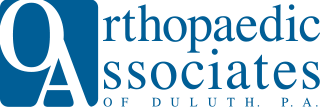
Latest Articles
-
Meet Our Experts at Orthopaedic Associates
Serving the Northland since 1969, Orthopaedic Associates is the go-to team for orthopaedic and sports medicine health care. Our team of board-certified surgeons and physicians share the same goal: to help you move better and without pain through a comprehensive
-
Common Myths about Orthopaedics
The field of orthopaedic care can be confusing and unknown. Or maybe you have heard things about it that you are wondering are true or not. At Orthopaedic Associates of Duluth, we know that uncertainty can make people delay care
-
Winter Shoveling Shouldn’t be a Pain
Here in Duluth we are approaching snow season and while a fresh layer of powder looks beautiful, the task of removing it can be tough on your body – especially your back, shoulders, and knees. Each year, thousands of people
-
The Pilates Reformer and its Use in Physical Therapy
In our latest blog we discussed the benefits of utilizing physical therapy for recovery. Continuing to honor National Physical Therapy Month, we will be discussing one of the powerful tools we utilize at Orthopaedic Associates in our therapy clinic to
-
5 Benefits of Physical Therapy for Recovery
National Physical Therapy Month is celebrated each October, making now the perfect time to shine a spotlight on the role physical therapy plays in helping our patients’ recovery! Whether you’re dealing with a sprained ankle, recovering after surgery or healing
-
Stop Elbow Pain From Impacting Daily Life
We often have no idea how much we use our elbows until they start hurting. Whether from an injury or a nagging chronic condition, elbow pain can interfere with some of the most basic parts of your day. This blog
-
What You Need to Know About Tennis Elbow
Have you experienced a nagging pain on the outside of your elbow, especially when lifting, gripping or twisting? You might be dealing with tennis elbow. Don’t let the name fool you, you don’t have to be a tennis athlete to
-
Common Neck and Spine Conditions and Treatments at Orthopaedic Associates
At Orthopaedic Associates, we understand that spine and neck conditions can be complex and deeply impact your quality of life. That’s why our team of highly specialized spine surgeons and practitioners offers a comprehensive, integrated approach to care—from initial diagnosis
-
Understanding the Causes of Neck Pain and When to Seek Treatment
Neck pain is a common complaint that can range from a minor annoyance to a debilitating condition. While it can often be a temporary result of sleeping in an awkward position, persistent or severe neck pain can signal a more
